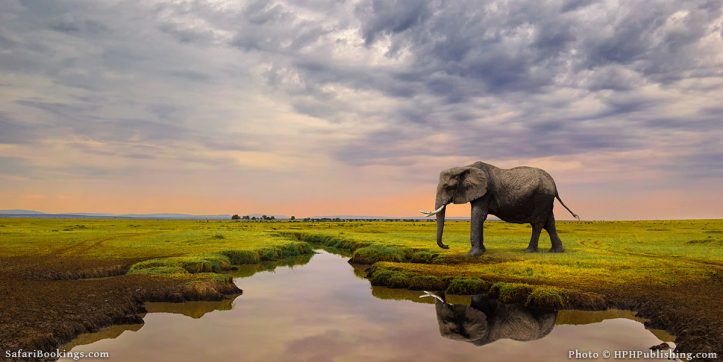
Best Places To See the Big 5 on Safari in Africa
 By Ariadne van Zandbergen
By Ariadne van Zandbergen Ariadne is an Africa expert. She and her husband form a team who author many guidebooks to African countries.
Going on safari in Africa has become closely associated with seeing the Big Five. Have you ever wondered what that is all about and where you should go? The term ‘Big Five’ originated in the early days of game hunting. Lion, leopard, elephant, buffalo and rhino were the most dangerous animals to hunt and were therefore considered the most valuable trophies. Today, with most visitors armed with cameras, the Big Five are still perhaps the most exciting encounter on a safari. Below are some of the best places to see the Big Five in Africa.
1. Sabi Sand Game Reserve – South Africa
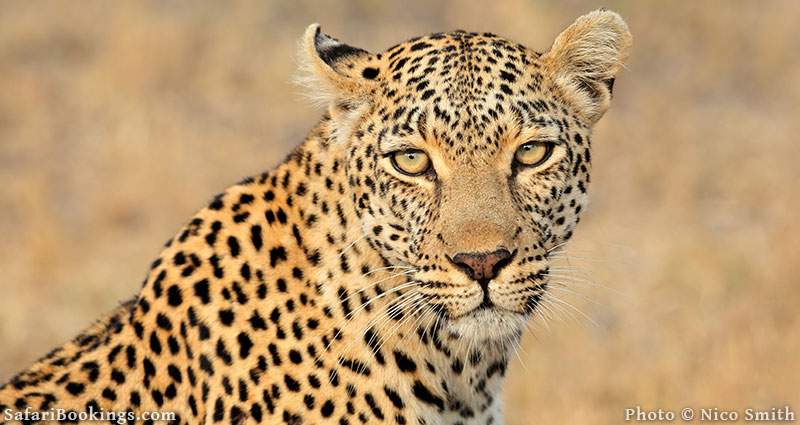
Spotting the Big Five doesn’t get easier than in Sabi Sand Game Reserve. This cluster of jointly managed private reserves has open borders with Kruger and forms part of the same ecosystem, but animals tend to be more relaxed. Furthermore, unlike in Kruger, guided drives in open vehicles are permitted to head off-road, which makes for fantastic close-up viewing. The real star of Sabi Sands is the leopard. Nowhere else is this usually shy creature so habituated. Most guests are treated to sightings of leopards as they go about their daily routine: a male patrolling or hunting, a female nursing cubs, possibly even a mating pair in action.
2. Ngorongoro Crater – Tanzania
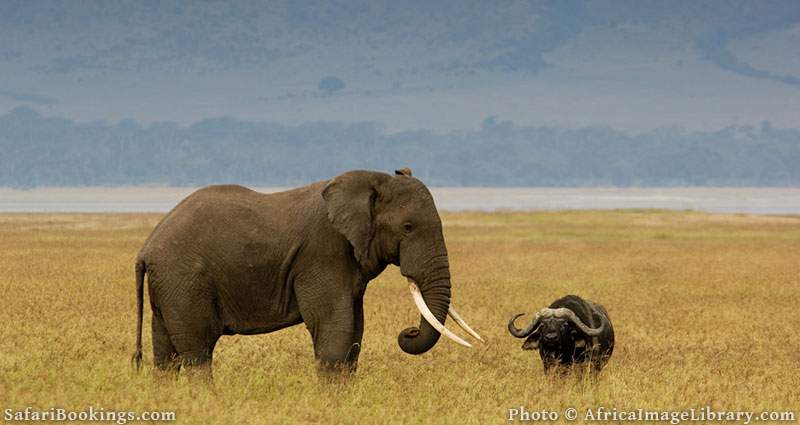
Ngorongoro Crater offers incredible wildlife viewing. Although animals can move in and out of the crater, climbing the steep caldera walls requires some effort, so much of the wildlife is resident inside. This includes a healthy population of black rhino. These shy creatures are rarely seen in East Africa, but the crater is one of the few places where they are easy to find. The other four members of the Big Five are prolific as well, although leopard sightings are hit-and-miss, and less likely inside the crater than on the forested rim. The good news is that these elusive cats are quite common in the Seronera area of Serengeti National Park, the next stop after Ngorongoro on most northern Tanzanian safari itineraries.
3. Masai Mara National Reserve – Kenya
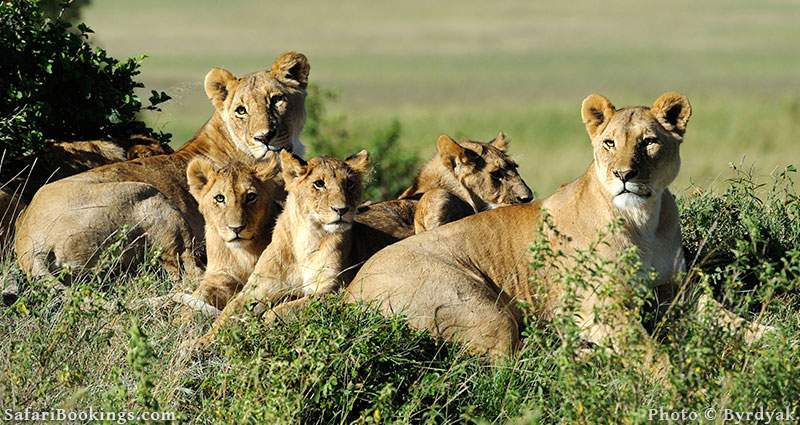
The Masai Mara is home to all of the Big Five but is most famous for big cats. You’ll be tripping over lions and cheetahs as they are remarkably common, and leopards are regularly seen too. Black rhinos are also present, but unless you’re fortunate enough to stay in the remote Mara Triangle in the far west, your chances of seeing one are slim. However, Lake Nakuru National Park, a popular stop-over en route to the Masai Mara, is home to both black and white rhino (but no elephants). White rhinos are commonly seen in small family groups grazing around the lake, especially from mid-morning and in the late afternoon.
4. Kruger National Park – South Africa

Whether you’re on a guided tour or self-driving, Kruger National Park is a great choice for a Big Five safari. The park is the size of a small country, and the wide variety of habitats it protects is reflected by the varied wildlife. Identifying all the different antelope species in Kruger can be an enjoyable challenge. In terms of the Big Five, lion, buffalo and elephant are easily found in southern Kruger, which is also one of the best places to see white rhino. With time on your hands and a bit of luck, you might spot a leopard too. Make sure to be out and about at dawn and dusk to increase your chances of seeing this shy cat which is active at night.
5. Madikwe Game Reserve – South Africa
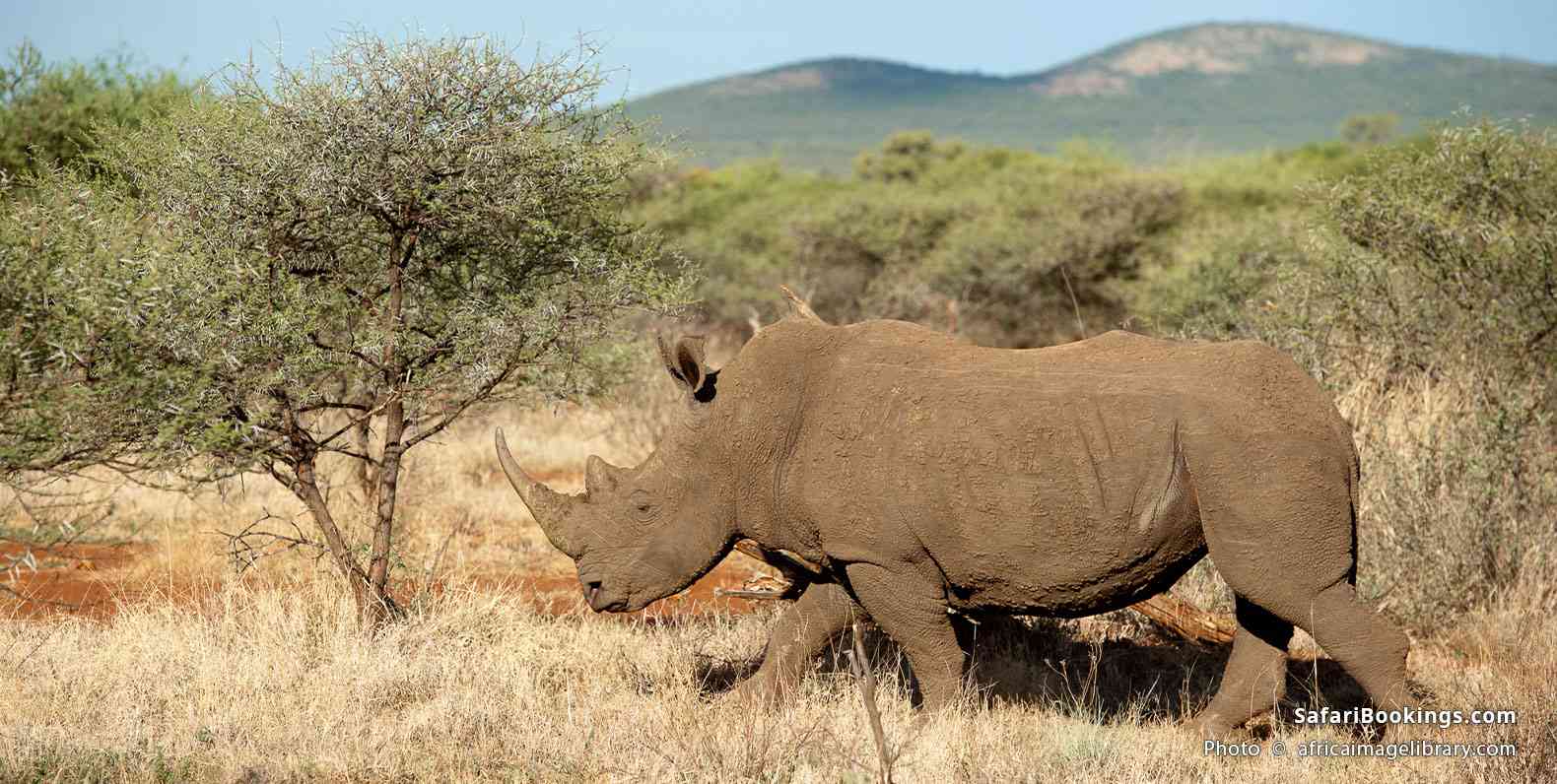
Madikwe is arguably the top African safari pick for those who want a good chance of spotting most of the Big Five in a malaria-free destination. Forged from formerly unproductive ranchland in 1991, this exceptional park protects a 750km²/290mi² tract of semi-arid savannah in North West province, some four to five hours’ drive from Johannesburg. Shortly after being created, it was stocked with 8,000 individual animals comprising 28 species, including all the Big Five. Today, you’re very likely to see lion, elephant and white rhino over the course of a few days in Madikwe, and there’s a fair chance of buffalo and leopard. Madikwe is also known as one of the best places to look for the endangered African wild dog, while other wildlife includes cheetah, giraffe, zebra and a wide variety of antelope. An unusual feature of Madikwe is that it is a state-owned property that functions more like a private reserve insofar as it is closed to self-drive safaris and day visits.
6. Okavango Delta – Botswana
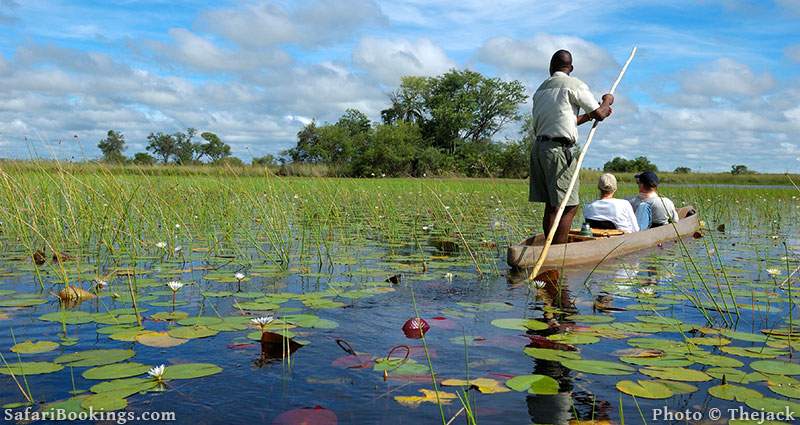
The Okavango is one of Africa’s most iconic wildlife destinations. The Delta is home to all of the Big Five, although rhino (both black and white) can be hard to find; Moremi Game Reserve offers the best chance, or visit Khama Rhino Sanctuary, a half-day’s drive away as an add-on. Buffalo and elephant thrive in the wetlands, and you should see some big cats as well. The most productive activity for spotting typical safari animals, including the Big Five, is a game drive. But you should put aside time to do a guided walk and for exploring the Delta’s channels by mokoro (traditional dugout canoe). Gliding silently through waterlilies, dodging the odd hippo and scanning the shore for animals coming to drink, is an experience that will stay with you long after your trip.
7. Ol Pejeta Conservancy – Kenya
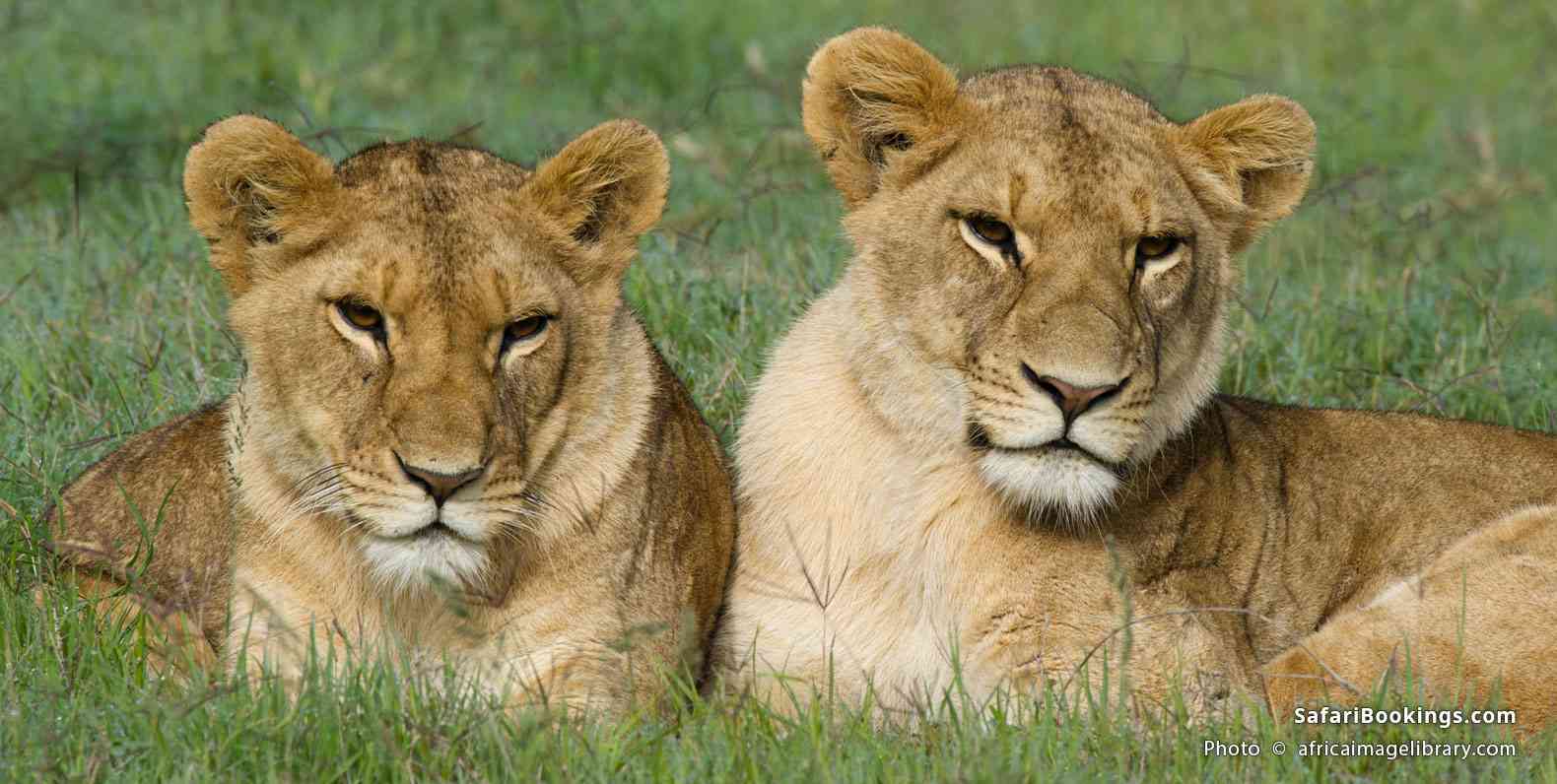
High on the Laikipia Plateau, just north of Kenya’s Central Highlands, Ol Pejeta Conservancy is a fine place to see the Big Five just a few hours north of Nairobi. Seeing lions on a guided game drive is always possible, but the conservancy also offers a fine lion-tracking excursion, which really increases your chances. Rhinos are also commonly seen, both roaming free out on the grasslands, and in the enclosures for the last two remaining northern white rhinos on the planet. Leopards inhabit the dense thickets and riverine woodlands, while elephants and buffalo are also common. Some of the nearby private and community conservancies, including Lewa Wildlife Conservancy, are more exclusive, but are also known for their Big Five possibilities.
8. Akagera National Park – Rwanda

While Rwanda is well known for its mountain gorillas, it is also home to the Big Five and many other savannah-dwelling animals. The place to go on a classic safari in Rwanda is Akagera National Park. Wildlife here was heavily depleted by warfare and poaching, but since 2010 it has made an impressive comeback. The reintroduction of black rhinos and lions in 2017, followed by white rhinos in 2021, means that Akagera offers a truly off-the-beaten-track opportunity to see the Big Five in Africa.
9. Murchison Falls National Park – Uganda
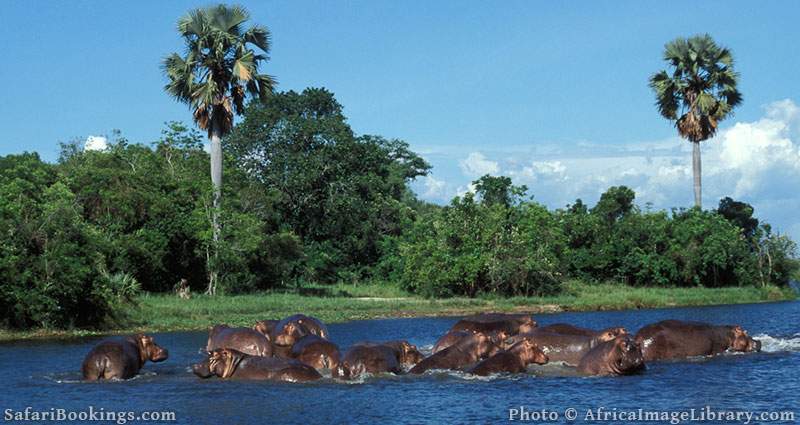
Murchison Falls National Park is as much worth visiting for its spectacular scenery as for its wildlife. It is bisected by the Victoria Nile River. A boat trip to the base of the waterfall for which the park is named is not to be missed. The river is home to hundreds of hippos and crocodiles and, in the afternoon, you’re likely to see buffalo and elephants on the shore. Murchison Falls is not a complete Big Five destination as there are no rhinos, but many visitors stop in at Ziwa Rhino and Wildlife Ranch en route for an exciting rhino tracking experience.
10. Phinda Game Reserve – South Africa
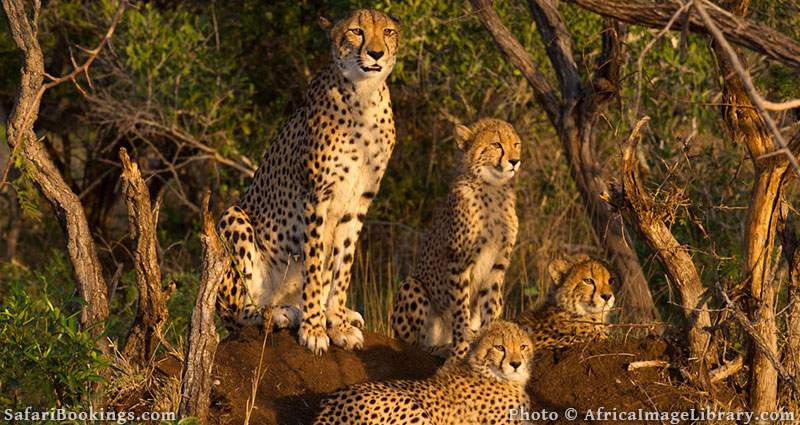
Phinda is one of South Africa’s top private Big Five game reserves. You have a choice of four stunning accommodations spread out over the reserve’s different habitats: Rock, Mountain, Forest and Vlei (wetland) Lodge. The guiding is superb and you’ll easily see four of the Big Five (lion, elephant, buffalo and white rhino) as well as some Zululand specials, such as the graceful nyala and the shy red duiker. Although there are plenty of leopards around, you’d be lucky to see one. As compensation, Phinda’s flagship species is the cheetah and sightings of this graceful big cat tend to be incredible.
11. Majete Wildlife Reserve – Malawi
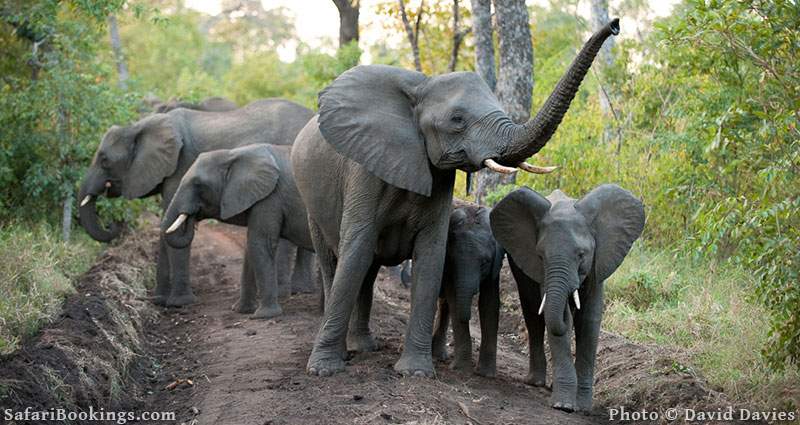
Majete Wildlife Reserve is one of Africa’s modern conservation success stories. Prior to 2003, the reserve was almost completely poached out. Since then, under the management of African Parks, more than 3,000 individual animals, including all of the Big Five, plus cheetah and African wild dog, have been reintroduced. Elephants have bred so successfully that a surplus of 200 individuals has been translocated to Nkhotakota Wildlife Reserve. Lions are also doing very well, with a population now estimated at around 100 individuals. Although wildlife viewing in Majete requires a bit of patience, it is a totally unspoiled experience, far away from the crowds.
Want To Go on an African Safari?
Click on the button below to compare African safaris offered by top-rated tour operators.
 By Ariadne van Zandbergen
By Ariadne van Zandbergen Ariadne is an Africa expert. She and her husband form a team who author many guidebooks to African countries.
More About This AuthorAfrican Safari Tours
-
![7-Day Luxury Botswana Safari Tour]()
7-Day Luxury Botswana Safari Tour
$6,599 to $8,799 pp (USD)
Botswana: Private tourLuxuryLodge & Tented Bush Camp
You Visit: Maun (Start), Central Kalahari GR, Okavango Delta, Chobe NP, Kasane (End)

Wayfairer Travel

4.8/5 – 185 Reviews
-
![4-Day Private Midrange Safari Northern]()
4-Day Private Midrange Safari Northern
$1,650 pp (USD)
Tanzania: Private tourLuxuryLodge & Tented Camp
You Visit: Arusha (Start), Tarangire NP, Serengeti NP, Ngorongoro Crater, Arusha (End)

Mountain Warriors Tours and Safaris
4.9/5 – 248 Reviews
-
![4-Day Explore Tarangire, Lake Manyara & Ngorongoro]()
4-Day Explore Tarangire, Lake Manyara & Ngorongoro
$1,369 to $1,435 pp (USD)
Tanzania: Private tour
Mid-range Lodge & Tented CampYou Visit: Arusha (Start), Tarangire NP, Lake Manyara NP, Ngorongoro Crater, Mto wa Mbu (Town), Arusha (End)

Paradise & Wilderness
4.8/5 – 225 Reviews



 Subscribe to our newsletter
Subscribe to our newsletter
 Follow us on Instagram
Follow us on Instagram





